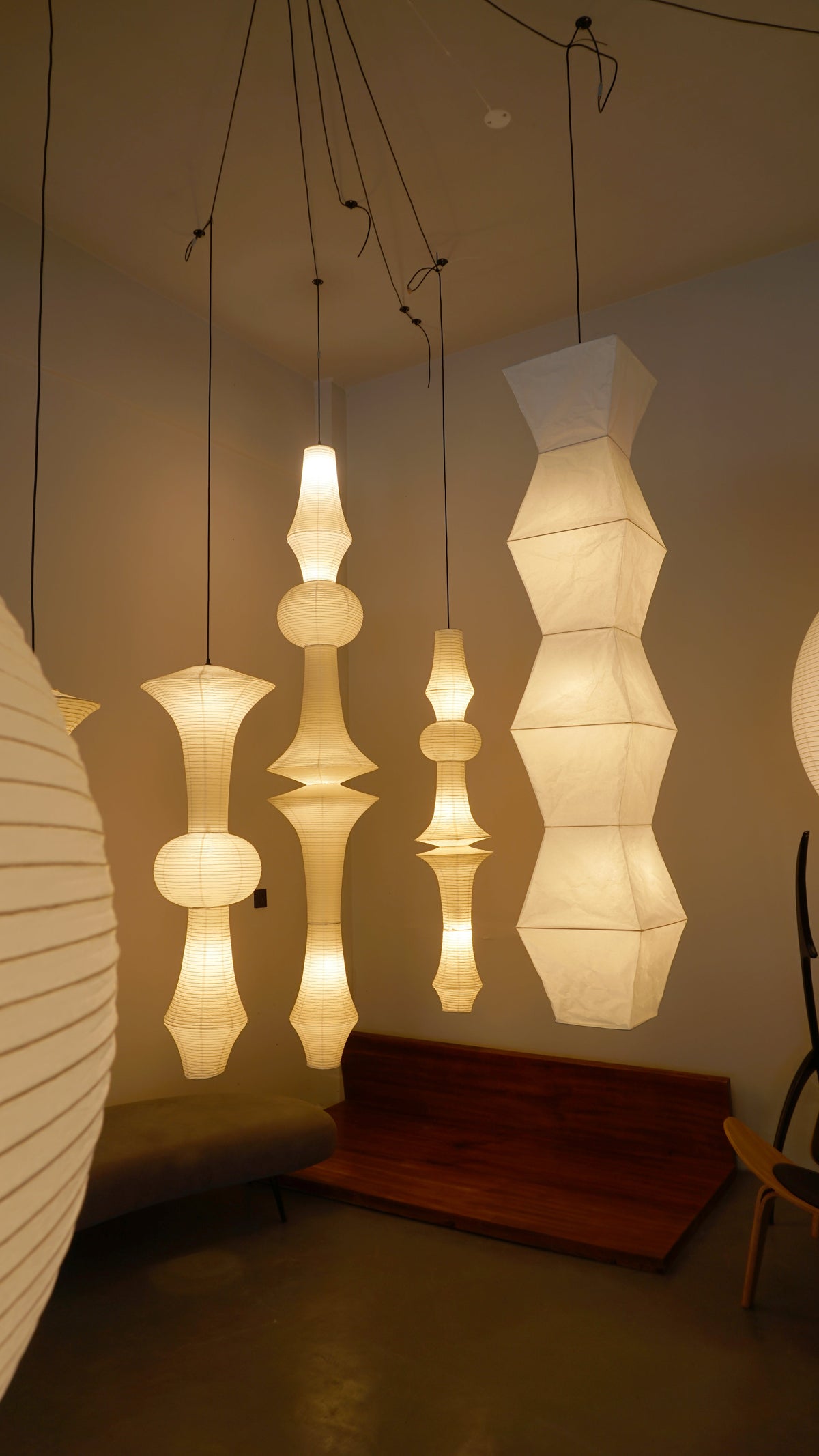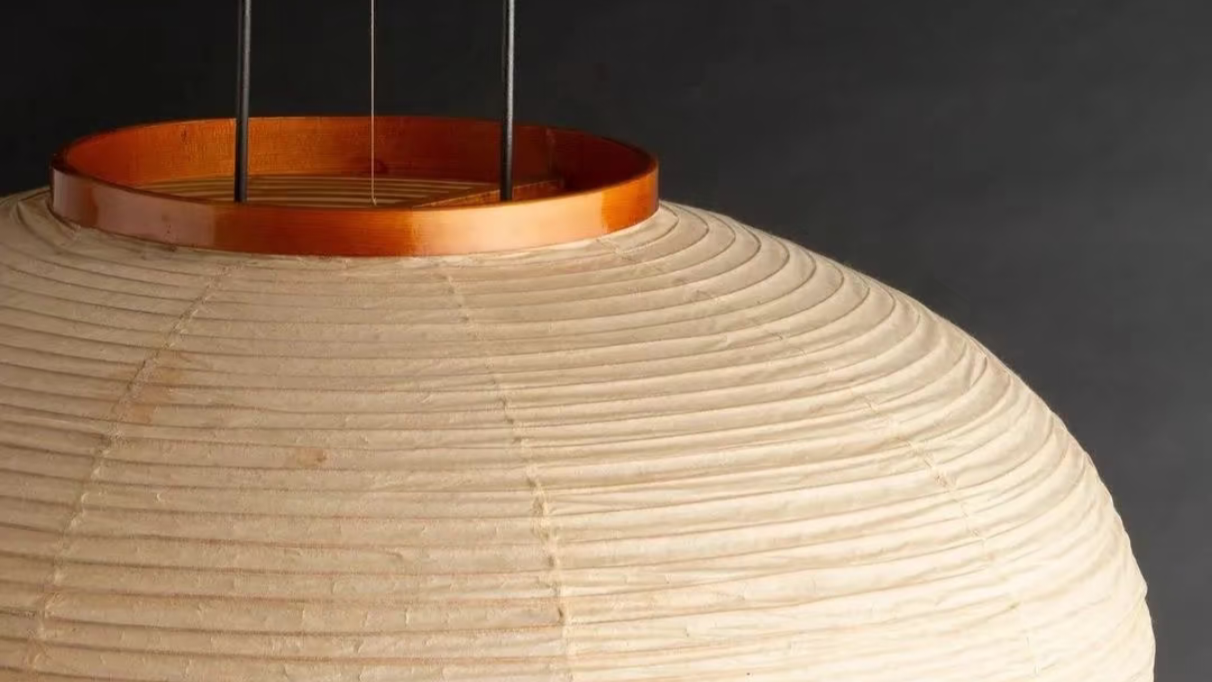Introduction — why light choice matters
Light shapes how a room feels. A bright overhead fixture can make a space functional, while the right paper lamp can make the same room feel calm, warm, and inviting. Classic Japanese style lamp designs and the famous Noguchi Akari lamp family both aim for gentle, human-centered lighting — but they go about it in different ways.
What traditional Japanese lamps bring
Traditional Japanese hanging light fixtures and japanese lantern lamp forms come from centuries-old craft. They emphasize:
-
Natural materials (paper, bamboo, wood)
-
Clean, restrained silhouettes
-
Soft, even warm lighting that invites relaxation
A 30 inch paper lantern or a group of smaller table paper lamp pieces can give a room that quiet, meditative glow common in Japanese interiors. These lamps are wonderful for living rooms that need a calm focal point.

Noguchi Akari lamps — sculpture meets light
Isamu Noguchi redesigned the lantern idea into something sculptural and modern. Noguchi Akari lamp designs are often called sculpture lamp because they behave like art that happens to emit light. Key Akari strengths:
-
Extremely even, diffuse light thanks to high-quality washi paper
-
Minimal, balanced forms that read as art and function at once
-
A vintage sensibility that still feels fresh — simple, retro, and never out of style
Popular Akari sizes and models include akari 75d, akari 75a, akari 80a, akari 100d, and akari 100a for larger, statement pieces. Smaller options like the akari 20n lamp, akari 20n table lamp, and akari lamp 24n (also sold as akari 24n table lamp) work beautifully as bedside or accent lighting.

How they differ — light, shape, and mood
-
Light quality:
-
Japanese style lamps give warm, localized light that respects traditional forms.
-
Akari lamps are engineered to diffuse light evenly, reducing glare and softening shadows — perfect for cozy evenings or a calm living room reading spot.
-
-
Design language:
-
japanese lamp styles often feature pronounced cultural patterns or wooden structures.
-
akari lamp designs are pared down to pure geometry: spheres, ovals, cylinders — they read as modern sculpture but keep a gentle, human scale.
-
-
Versatility & placement:
-
A japanese hanging light fixture is lovely above a low dining table or tea corner.
-
akari pendant lamp or akari ceiling lamp works well as a living room centerpiece or over a long table; smaller lamp paper table pieces like the akari 20n table lamp add layered ambiance.
-
-
Timelessness:
Both styles are inspired by tradition, but Akari’s blend of minimalism and craft makes them especially durable across trends — they feel retro yet timeless, which is why many people choose Akari pieces for both contemporary and historic homes.

Which models to consider (quick guide)
-
30 inch paper lantern — great as a centerpiece in mid-sized rooms.
-
akari 100a / akari 100d — big, sculptural pieces for high-ceiling rooms.
-
akari 24n lamp / akari 24n table lamp — versatile for tables or floors.
-
akari 20n lamp / akari 20n table lamp — compact, perfect bedside or desk lamps.
Use a akari 75d or akari 80a as your main living room lamp and add an akari 20n table lamp on a side table to create layered, cozy light.

Why choose our Noguchi Akari paper lamps?
-
Pure, soft light — our paper lamps produce a comfortable warm lighting that flatters faces and furnishings.
-
Simple, sculptural beauty — each piece works as both lamp and object: sculpture lamp for your home.
-
Vintage character, modern fit — the look is retro without feeling dated — truly never out of style.
-
Options for every room — from akari 24n table lamp to akari 100a, there’s a scale for bedrooms, living rooms, and open-plan spaces.
-
Easy styling — these lamps pair with minimalist, mid-century, and classic interiors alike.
Quick styling tips
-
Hang a large akari 100d high in a foyer for grand, soft light.
-
Cluster two or three akari 75a pendants above a dining table for layered warmth.
-
Use akari 20n table lamp or akari 24n table lamp as a bedside companion to avoid harsh overhead lights.
Final thoughts
Whether you love authentic Japanese lantern lamp charm or the clean, sculptural lines of a Noguchi Akari lamp, these paper lighting options bring warm light, simplicity, and timeless style to your home. From a cozy 30 inch paper lantern to a dramatic akari 100a, the right paper lamp makes your rooms feel softer and more inviting — a small change with a large effect.




0 commentaire